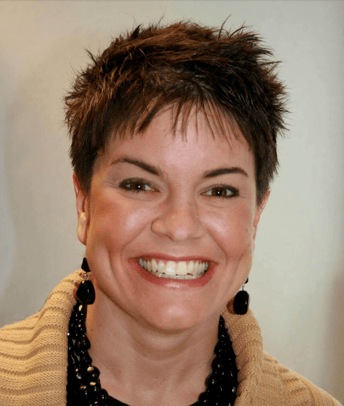 Introduction
Introduction
Have you been asked to join a nonprofit Board, but you’re not sure how to respond? Already on a Board and wondering if you’re on the right track? Read on, and soon you’ll understand what’s expected of you.
First and foremost, the law requires every nonprofit organization to be run by a Board of Directors. The Board holds the organization “in trust” – a legal term, meaning the Board is responsible for the legal and financial well-being of the organization. The Nonprofits Board also ensures the public trust - an altogether different type of trust - by serving as community ambassador/advocate and seeing to it that funds are spent wisely and responsibly, and that the CEO manages day-to-day operations effectively.
The Board fulfills these responsibilities as both the entire Board of Directors as a whole, and also through the expectations of the individual Board member roles. Below takes you step-by-step through the top ten most important things that a Board of Directors does to fulfill their responsibility to the nonprofit organization that they serve.
Board of Directors
Top Ten Responsibilities

-
GOVERNANCE
Your role as a nonprofit Board member is to work collaboratively with the team to ensure effective organizational operations. Note that there’s a differ ence between the Board as a unit, and the Board member as an individual: these terms are not interchangeable. Whereas the Board functions as group or collective, it exists only when meeting as such.
Individual Board members attend Board meetings, but they don’t have any more or less authority than other members. Governance happens at the Board level, while individual Board members sit on committees and support Board decisions.
Importantly, while a nonprofit Board is not responsible for raising money, it is accountable for ensuring that money is raised. It sets gift acceptance policies and mandates that members help with fundraising, while the individual members serve to review and endorse the fund development plan.
-
UNDERSTANDING EXPECTATIONS BEFORE ACCEPTING BOARD MEMBER POSITION
Before agreeing to “sign on,” you’ll want to be sure you understand both what’s expected of you and what the time requirements will be. You’ll be expected to attend Board meetings having reviewed the advance materials, prepared to discuss them. In order to provide the necessary oversight, you’ll need to arrive at an understanding of the financial, tax, legal, and personnel obligations - even if it’s not your area of expertise. With due diligence, you’ll ask tough questions and expect honest answers, keeping everything in confidence. On top of all that, keep in mind the need to respect the nonprofit’s paid staff and their time, knowing your boundaries — we’ll say more on this later.
As mentioned above, it’s essential that you understand the time commitment involved, even before you commit. This should not be downplayed. You need to ask, and be absolutely clear, about how many meetings there will be; how many committees you’ll need to sit on; how much work there’ll be outside of Board meetings and committees; and how many hours spent in fundrais ing, training, cultivation sessions. Make decision only after you have answers, because once you’re in, you’ll need to be able to fulfill this time commitment. This is not for the faint of heart!

SAMPLE BOARD FUND DEVELOPMENT EXPECTATION FORM
Name: __________________________________________________________________________________
I understand my financial commitment is necessary to ensure the success of the organization. My company (firm) and/or I will participate in the following ways this year:
___ Dinner Gala ($100/ticket; sponsorships from $500-$10,000) $________ ___ Golf ($200/ticket; sponsorship opportunities from $500-$5,000) $________
In order to achieve 100% participation of the Board, I pledge $________ TOTAL $________
For my personal gift, I would prefer to make:
___ One Payment ___ Quarterly payments of $________
___ My company will match my donation (I will submit the matching gift form with my payment(s)).
Please make gift or first pledge payment by January 31, so we can start the year with 100% participation.
As a Board member, I agree to serve on the following committee(s) this year (check all that apply):
___ Fundraising ___ Finance ___ Governance ___ Program
I would like to help with donor information, cultivation, and stewardship (check all that apply):
___ Host an informational event in my home
___ Make thank you calls to donors (from home or office - 10 calls per year) ___ Add personal notes to solicitations and thank you letters
___ Bring colleagues, friends, and family to fundraising and cultivation events ___ Add 5 or more new names to our mailing list as potential volunteers or donors
I understand that Board meeting attendance is key to the success of the Board and the overall health of the organization.
Board Member Signature
Date
-
ADDING VALUE AND EXPERTISE
Consider what it is that you bring to the table. Were you chosen because your skills will help achieve the organization’s goals? To help meet its diversity requirements? To facilitate networking? To learn and grow professionally? Board members are chosen to add value to the organization in the form of skills, connections, knowledge, etc.
Consider next whether those reasons sustain your motivation to serve the Board effectively? It’s a two-way street, after all. To get the most out of your Board experience, define your motivational needs from the organization, and ensure the organizational mission matches your passion: your values are orga nization’s values.
Take on assignments that keep you engaged and motivated; work collabo ratively with others, and seek recognition. You can expect to take part in pro fessional development, appraise your own performance, and stay informed about the organization.
-
MAKING DECISIONS ON BEHALF OF THE ORGANIZATION
The Board makes decisions for the organization by voting as a group. The group must come to agreement in order to move forward. These decisions involve taking action on current issues. But, decisions are also made to help plan the future direction of the nonprofit.
The decision-making process of the Board must use a consensus model. Agreement across the group is critical. But it is important that input from all members is heard and valued. Members should not be pressured to follow one individual Board member. It can take time to build this consensus. But it is important that the Board not lose sight of the fact that all members must be able to weigh in on the agenda.
As a Board member, it is your responsibility to keep this process moving smoothly. Organized, productive meetings will make that happen. Meetings must have an agenda. All members must participate and the group should respect the diversity of opinions and thoughts. As a member, stand up for a dissenting point of view to ensure that all are being heard. And, consider where and when it makes sense for staff to help in making a decision. Sometimes, feedback from staff on the front lines might be extremely valuable.
As the Board plans for the future health of the organization, the Board and its members have responsibilities. Upon joining a Board for the first time, you should determine if a plan already exists. Get involved in the planning process and understand the plan and its components. This is necessary in order to monitor the implementation of the plan. It is the Board’s job to make sure that the plan is proceeding along as outlined and targets are being met so as to stay the course.
-
SERVING ON SUB-COMMITTEES AND TASK FORCES
In addition to the Board itself, sub-committees of the board or task forces associated with specific projects are necessary to accomplishing delivera bles. It is expected that, as a Board member, you will serve on at least one
sub-committee or task force. So, you should be aware of what that involves in terms of time and commitment.
What are the purpose and expectations of your committee? What staff support do you have? How much of your time is expected?
Meetings associated with these groups should also have an agenda. Again, as with the Board meetings, an organized process means efficient use of time. Everyone on the team should know the goals of the committee and the intended outcomes; the “why”. As a Board member, you should support the committee recommendations at the full Board meeting. So, if you are expected to represent the sub-committee, then you will want to have some influence over the decision-making process.
As a vested member of the committee, be actively involved in the meetings. Be attentive and be a good listener. Ask for outcomes. Build teamwork across the group; again consensus is important to ensure that all are in agreement but everyone has a “say.” Also important though, is that you should have fun and enjoy the camaraderie!
FRIENDS OF BUTTONWOOD PARK
Board of Governance Committees Structure Recommendations
Development Consulting Solutions recommends that the Friends of Buttonwood Park establish a variety of committees to ensure proper board functioning and governance. These committees should include the Executive, Finance, Governance, Development, and Program Committees.
Description of Governance Committees in a traditional non-profit:
The Executive Committee is a subset of the BOard that includes the Board’s officers and chairs of committees. It enable the Board to conduct urgent business when a regualr Board meeting is not scheduled and/or cannot be convened and also acts as a sounding Board for the CEO regarding insights and advice. Be sure that the Executive Comittee does not make decision in lieu of the entire Board.
The Finance Committee provides financial oversight to the organization regarding budgeting and financial planning, financial reporting, and the creation and monitoring of internal controls and accountability policies.
The Governance Committee works to ensure that the Board reviews and updates annually the Board role and responsibilities description and expectations, reviews Board composition and nomination process, provides Board orientation and training, and overall Board effectiveness and leadership.
Buttonwood Park Committees to consider consolidating here: Nominating (change to Governance)
The Development Committee is responsible for overseeing the organization’s fundraising done by the Board through working with the Executive Director and Development Director (if on staff), the Finance Committee, and the full Board.
Buttonwood Park Committees to consider consolidating here: Membership and Publicity (although Publicity/Marketing can be its own committee)
The Program Committee works to ensure that the organization is providing programming that is relevant and develops recommendations for policy, procedures, and priorities governing the programs and services to be offered by the organization.
Buttonwood Park Committees to consider consolidating here: Caretakers Committee, Education, Nature Trails, and Programs/Events (if events are fundraising related, events can move to the Development Committee)
-
UNDERSTANDING HOW TO RUN EFFECTIVE BOARD MEETINGS
Going beyond the point about having an agenda and making sure that all members have a chance to weigh in on the decision-making process, effective Board meetings allow a Board to fulfill its purpose. They should be structured to promote teamwork, reinforce a shared vision and the non profit’s mission, and connect the Board with the work of staff. The meetings afford time to recount successes and also the stimulation of ideas for future successes as well. And they provide social interaction to bond the group together and foster group commitment. Again, if the meetings are to be effective, it is important to avoid dissent and not allow domination by a few.
So, what is your role as a member in shaping effective Board meetings? Well, plan to put your all into the meetings by being prepared and staying focused. Read information in advance so you can be ready to participate in discussions.
Ask the necessary questions. Help the Board to design and stick to the agenda, and help this along by doing your part to emphasize the “big picture” discus sions. It is up to you as to what you ask for in terms of content and quality. Arrive on time and stay the entire meeting. Help to solve problems and smooth over any dissent to keep meetings productive and the process moving forward. Inspire the team by infusing “mission moments’ into the discussion.

Your attendance at all Board meetings is critical for many reasons. In order to help meetings to be effective, you have to be there! But, on a practical note, attendance is also necessary to ensure a quorum. By participating in the meetings, you are fulfilling your responsibility to the financial health of the organization and staying informed about the organizational issues. You will also have a dynamic sense of its accomplishments which will help to keep you engaged in the processes such as fund development. And, of course, you have to be present to create a spirit of camaraderie and develop new relationships with your co-members.
Responsibility does not end with the adjourned Board meeting. The work of the Board is endorsed at the committee meetings for which you should be participating. Additionally, you should expect to have development assignments, such as cultivation and solicitation calls. There might be finance work relating to endowments or a bank meeting for which a Board member is needed to attend. Plan to check on the progress of the strategic plan which might need refreshing. Board members have responsibilities on the program side as well. You may need to meet with program staff, visit sites, meet folks in the community, etc. Expect to work with leadership for continuous improvement for the future of the organization.

MALTA HOUSE, INC. AGENDA — JUNE 7, 2017 BOARD MEETING 7:00 Introductions (Anne Marle Hynes); Opening Prayer and Mission Moment
|
Time |
Topic / Advance Materials |
Lead |
|
7:00 - 7:05 |
1. Consent Agenda Motion to be made and voted on: a. Approve April 5, 2017 Board meeting minutes b. Accept March 2017 Income Statement & Balance Sheet (2 files) c. Accept April 2017 Program Report d. Accept Development Team update |
Kim |
|
7:05 - 7:20 |
2. Good Counsel Collaboration a. Discuss and approve Memorandum of Understanding Motion to be made and voted on: Resolved that the Board of Directors approves the Memorandum of Understanding between Malta House Inc. and Good Counsel Inc. |
Kim & Chris |
|
7:20 - 7:45 7:45 - 8:05 |
3. Development Matters a. Review Progress on 2016-18 Fund Development Plan b. Discuss roles of GC and MH Board in fund development c. Review 2017-18 Development Calendar (and budget impact) 4. Finance Committee Report a. Discussion and Approval of 2017-2018 Proposed Budget Motion to be made and voted on: Resolved that Board of Directors approve the 2017-18 Budget for Malta House Inc. b. Changes necessary to affect Good Counsel as operator of Malta House effective July 1, 2017 Motion to be made and voted on: Resolved that Board of Directors approves adding Chris Bell (as Member of the Corporation) as signor on all Malta House bank accounts |
Robin Chris Carey Brian T. |
|
8:05 - 8:20 |
5. Board Engagement in Development Activities a. Gala stewardship b. July 12 and 17 “Hope for Life Gatherings” c. Sept 30 Mid-Town Men Concert [Don’t forget to bring stamps] d. Sept/Oct 2017 Golf Marathon/Mini golf-a-thon |
Carey, Rudy |
|
Time |
Topic / Advance Materials |
Lead |
|
8:20 - 8:25 |
6. Governance Matters (Chair report; Slate of Officers & Committees) a. Election of Officers Motion to be made and voted on: Resolved that the Board of Directors approve the following officers of the Malta House Inc. Board of Directors for a 1-year term commencing on July 1, 2017: Chair: Kim Petrone; Vice-Chair: Tom Kolenberg b. Committee make-up for 2017-18 |
Kim |
|
8:25 - 8:40 |
7. Update on Malta House 2 Project |
Kim |
|
8:40 - 8:45 |
8. Other Matters a. Review Proposed Board Calendar for 2017-18 |
Kim |
|
8:45 - 9:00 |
9. Executive Session (Directors Only) |
Kim |
Staff attendance: Robin for #1-3; Brian V for #1 - 4; Carey for #1-8 6/3/17

-
BEING ENGAGED AND INVOLVED IN FUND DEVELOPMENT
The Board is responsible for ensuring that funds are raised for the organiza tion, as noted previously. The team directly responsible for the fundraising process is the Department of Development, Executive Director, CEO, and the Development Committee. But, the Board is still responsible for making sure everything possible is being done to accomplish this and bring in the most funds available, whether through donors, foundations, sponsorships, or whatever makes the most sense.
As a Board member, it is important to understand the distinction between philanthropy and development. Philanthropy is voluntary action for the public good, whereas Development is relationship building based on shared values. Recognizing the difference will help a Board member contribute to the success of the nonprofit’s fund development process.
Philanthropy is an investment in the organization’s mission. A donor’s act of philanthropy is to give “through you” rather than “to you.” The donor believes that your organization will make an impact. They invest in the success of your mission with the expectation of getting a return on their investment. “Tin cup begging” is a thing of the past. Serious donor contributions are focused on specific areas and strategies. Development focuses on uncovering the shared values between a donor and the nonprofit organization so that those values can then be developed.
Everyone in the organization participates in donor development. The core development team does their part. And, as a Board member, it is a principal responsibility to be involved in donor development in whatever form – cultivating, asking, stewarding, etc. The Board’s role is also to build confidence across the organization and engage Board and staff members. One way to do this is by demonstrating your own investment in the mission.
It is expected that the Board will give money, not just time. The CEO or Board Chair will approach the entire Board in-person with a request to give to the organization. A strong fund development process has 100% Board giving.
The donor cultivation process involves identifying shared values through research and interaction with donors. Various cultivation strategies must be explored to determine what is appropriate for each donor prospect. As a Board member, you will have certain responsibilities. For example, you may be asked to host a cultivation event. As part of the event preparation you may need to personally identify one or more prospect, and follow up person ally with telephone calls to ensure attendance. During the event, you would need to welcome and greet attendees with a personal introduction, and share your involvement with organization and what it means to you personally. Board members are expected to circulate during the event and be prepared with “talking points” for discussions with attendees. Lastly, you would need to thank invitees for their attendance. However, other more simpler forms of cultivation may be asked of you. For instance, you may be asked to sign acknowledgement letters, make thank you calls to donors, or to personalize appeal letters. Donor cultivation is a critical part of the fundraising cycle. It is during this time that the organization will build relationships, strengthen communication, and move towards the final end goal (i.e., “the ask”). And so, the important next step is the way in which the donor is asked.

As the organization gets to know a donor, they will begin to understand when the right time will be to make the ask. As a Board member, understand your role in “the ask” and the expectations. Actively participate in the process to continually move the donor towards the ask and strengthen the connection. And, note, that you don’t have to ask. Sometimes as a Board member you just need to assist in opening the door for someone else in the organization to make that ask. Relationship building will continue into the next phase – stewardship.
Recognize the importance of serving as a steward of donors’ resources. Know that the request for funding is not about a one-time interaction. The fundrais ing cycle is infinite and more than just a single transaction. The donor must be nurtured beyond the ask.
As a Board member you have two stewardship roles. One is caring for the donor so there is a solid return on their investment. The other is caring for the return on the investment so there is maximum impact of the gift. The
Board must monitor the management and use of the donors’ investments. This can be done by insisting that program budgets demonstrate a return on investment and future investments. Be diligent about endowment management. Have facts at your fingertips about how money is spent (e.g., administrative and fundraising cost percentages.)
Fund development should be taken seriously in your Board member role. The success of the organization depends upon donor income. An engaged and informed Board will motivate giving, resulting in positive returns.
SAMPLE BOARD MEMBER CONTRACT
I, ______________, understand that as a member of the Board of Directors of ____________, I have a legal and ethical responsibility to ensure that the organization does the best work possible in pursuit of its goals. I believe in the purpose and the mission of the organization, and I will act responsibly and prudently as its steward. As part of my responsibilities as a Board member.
- I will interpret the organization’s work and values to the community, represent the organization, and act as a spokesperson.
- In turn, I will interpret our constituencies’ needs and values to the organization, speak out for their interests, and on their behalf, hold the organization accountable.
- I will attend at least 75% of Board meetings, comittee meetings, and special events.
- Each year, but no later than Thanksgiving of each year and without having to be asked, I will make a personal financial contribution at a level that is meaningful to me.
- I will actively participate in one or more fundraising activities. 6. I will excuse myself from discussions on votes where I have a conflict of interest.
- I will stay informed about what’s going on in the organization. I will ask questions and request information. I will participate in and take responsibility for making decisions on issues, policies, and other matters. I will not stay silent if I have questions or concerns.
- While I am a member of this Board, I will make every effort to vote in every public election.
- I will work in good faith with staff and other Board members as partners toward achievement of our goals.
- If I don’t fulfill these commitments to the organization, I will expect the Board president to call me and discuss my responsibilites with me.
-
PARTNERING AND COLLABORATING WITH OTHER ORGANIZATIONAL MEMBERS (E.G., EXECUTIVE MANAGEMENT, STAFF, VOLUNTEERS, ETC.)
An effective Board collaborates well with executive management and other members of the organization. The relationship should be a partnership. The roles should be clearly delineated so there is no confusion.
The Board will have a close relationship and frequent interaction with the CEO. The “CEO” is the Executive Director, President, Director, etc. The individ ual in this position is both the leader of the organization but also subject to the Board’s authority. He or she is responsible for the day-to-day operations. But, the position reports to the Board. The Board hires, evaluates, and termi nates him/her. The CEO hires, evaluates, and terminates all other organization staff. This boundary should be well-established and honored through your governance role on the Board.
Recognize the various ways in which you can help the CEO as a Board member. One is to do your fundraising job. Another is to assist in Board recruitment to bring on members that can contribute positively to the orga nization. Respect the boundaries in decision-making; govern, don’t micro manage. Foster a positive, constructive relationship, and appreciate the work of the CEO. Learn what the CEO prefers in a relationship with the Board. But, keep an appropriate and professional distance. Create an environment of candor and maintain an objective relationship. Outline expectations on both sides. For example, the Board will participate in strategic planning, but they should respect the knowledge and input of the CEO.
Likewise, you should expect the CEO to enable you in your role as a Board member. Let’s face it, you won’t know how to do everything, so it is up to the CEO to know and understand good governance as part of his or her role and to effectively enabling good governance by assisting you in meeting expectations and elements of your role. You are not expected to do it all by yourself!
The Board must evaluate whether or not the CEO is fulfilling his or her job responsibilities. The Board should create the CEO job position description and expectations and monitor how the CEO is meeting the objectives including how well that he or she is enabling Board members in their role and how well they understand and nurture a “culture of governance” with the organization. Attend to the regular reports on progress, plans, and problems. And, when problems do arise, a process should be in place to proactively address any conflicts. In order to evaluate the CEO properly, the Board should determine the answers to the following types of questions:
- Who does the evaluation and how often?
- Does it include a salary review?
- Does the full Board see the review before it becomes part of the record? • Are there opportunities for written or verbal feedback by the full Board? • Does the CEO have the chance to respond in writing?
- UPON what is it based?
- What standardized method is used, if any?

The Board’s relationship with staff is a little different. Keep in mind that staff reports to the CEO. The Board does not directly oversee staff and, as such, should not make undue requests of staff. This is the CEO’s job and the reason that you brought them on in the first place. The CEO oversees the day-to-day management of the organization and you, as a Board member, oversee gov ernance. Know these boundaries and respect them.
The Board’s relationship with volunteers should focus on professionalism, gratitude, and recognition. Remember that these individuals are contributing to the success of the organization by choice, on their own unpaid time. Volunteers come in many forms including as Board members! They might be auxiliary members, such as with fundraising, thrift shops, hospital rooms, etc. They might be program volunteers (e.g., classrooms, physical therapy rooms, etc.) At times, professionals, such as attorneys, accountants, or stockbrokers, may volunteer by offering their services pro bono. These individuals should be valued and treated with respect by the Board. These folks might also be candidates for those sub-committees or task forces mentioned earlier. These resources can be leveraged in multiple ways and are a huge asset to the nonprofit.

-
DEVELOPING YOURSELF AS A BOARD MEMBER
Serving on a Board is not just about accepting the position and showing up for meetings. An active, contributing Board member should also develop themselves to be able to offer more to the organization.
Take advantage of unique growth opportunities. Use your skills and expertise as a springboard for building better Board service. Request presentations by experts (i.e., governance, planning, financial reporting, etc.) to help hone your skills and knowledge. This will simultaneously strengthen the organizational knowledge as well by bringing the rest of the Board, management, and staff
into the learning process. Stay up to date on the organization’s programming and key industry trends so that you can strategically govern. Work with other Boards to build a community and actively develop other Board leaders. The results will pay off all around.
-
EVALUATING BOARD MEMBER EFFECTIVENESS
There may come a time when you question whether or not you are doing your best job as a Board member. Maybe the particular Board position is no longer right for you or you should no longer or cannot continue in the role for one reason or another. Maybe your circumstances have changed and your time is now limited. Or, you have outgrown the role. Maybe it is just time to step down. Individual Board members should be cognizant of their own effectiveness, and the Board as a whole should have a process for evaluating the members each year. Let’s face it, life changes and happens!
First, let’s focus on how you can ensure you are still adding value to the organization. You can determine this with a combination of assessments and interviews. Use a standard assessment tool that focuses on the areas of finance, fundraising, mission, vision and Board tasks. Conduct confidential interviews with all Board members for feedback. And evaluate your own effectiveness with a Board self-assessment.
Ask yourself some questions, such as the following:
- Do you still have the time, energy, and commitment to serve? • What benefits have you derived from being on the Board? • What are your concerns and frustrations?
- How would you rate your own performance?
- What are your strengths and how do you feel you have used them? • What would you like to do better?
The answers to these questions, and others in board assessments, will help you know when it is time to step down. If the financial performance of the organi zation is in jeopardy, a new set of individuals might be needed to address the issues. Perhaps the mission, vision, and values of the organization have shifted or no longer align with your own. Sometimes there is just flagrant mediocrity, abuse of power, or other factors making your job as a Board member impossi ble. Your time, circumstances, or health, might have changed and you can no longer commit to the role. If the expertise, for which you were brought on in the first place, is no longer being used appropriately, then it might be time to part ways. If your Board member position is no longer among your top three priorities, then it is probably no longer the right choice.

BOARD SELF-EVALUATION QUESTIONNAIRE FOR ADAM’S HOUSE A Tool for Improving the Governance Practices of Non-Profit Organizations
Please return your completed survey by Friday, August 12 to Robin Cabral via email at rcabral@developmentconsultingsolutions.com or by mail to Robin Cabral, Development Consulting Solutions, 379 Brownell Avenue, New Bedford, MA 02740.
This survey asks you to assess your organization’s performance in corporate governance. Your answers, combined with others, will be provided to the board in a summary report for conversation and action.
Please be candid and note anything that you do not want included in the summary report distributed to the board.
Your responses are anonymous. Please complete only one copy of this survey.
- HOW WELL HAS THE BOARD DONE ITS JOB?
Circle the response that best reflects your opinion. The rating scale for each statement is: Strongly Disagree (1); Disagree (2); Maybe or Not Sure (3); Agree (4); Strongly Agree (5).
- Our organization operates with a strategic plan or a set of measurable goals and priorities.
- The board’s regular meeting agenda items reflects our strategic plan or priorities.
- The board has created or reviewed, in this period, some key governance job descriptions e.g board chair, directors, and committees.
- The board regularly assess itself.
- The board gives direction to staff on how to achieve the goals by setting, referring to, or revising policies
It can be an extremely challenging decision to delist a Board member. There is often concern and worry about hurt feelings and confrontation. But, most Board members are looking for a gracious way out. While in a Board member role, encourage the implementation of an organizational process to recruit, maintain, and also delist ineffective Board members.
Annual meetings with all Board members should be held. The Board Chair and CEO should meet with each Board member to address performance. Actions should be outlined for both good and bad performance.
Even if a Board member is performing well, consider how to go forward and leverage that positivity. Board members should be principal investors in the organization and deserve this time. Find ways to improve overall motivation.
Even if performance is positive, there may still be room for improvement. Now is the time to express concerns and desires. This might also be a good opportu nity to gain increased financial and other contributions from a Board member
when things are going well. Discuss involvement for the coming year. For example, encourage ways the member might be productive or personal solici tations that might be expected of that member with major donors.
When a Board member’s performance is poor, the Board Chair and CEO should address this. Ask why performance has declined, and if there is anything that can be done to rectify the situation. Discover the reasons as to why there is lack of engagement. Sometimes it is only a temporary setback and some members even turn things around due to attention to the matter. But, if there does not appear to be a chance to improve things, offer the opportunity to step down and vacate the role. Thank the member for their service and discuss the next steps.
Conclusion
So there you have it. This comprehensive list of Board responsibilities will help prepare you for a role on any Board. You should understand what is involved before committing your time. Know what you can offer to a Board, but also be honest with yourself about your motivation and what time that you have to serve. Now the commitment and expectations expected of you before you commit to serving. Serving on a Board is no simple matter. Recognize the challenges, and also be fair to the organization and yourself by accepting when it is time to step away.
Thanks for Reading!
Meet the Author

Robin L. Cabral is a Certified Fund Raising Executive (CFRE) with twenty-five years of experience and millions of dollars raised, assisting non-profit organizations as a development professional. She has overseen all aspects of fund development, from annual funds to capital campaigns to donor communications. Her impressive non-profit career includes positions as Director of Development and Marketing throughout the Northeast, including her role as a regional and worldwide Director of Development.
Educationally, Robin has obtained a Bachelor of Arts degree in Sociology from the University of Massachusetts Dartmouth, and a Masters of Arts in Philanthropy and Fund Development from Saint Mary’s of Minnesota. She currently holds the designation of Certified Fund Raising Executive (CFRE) and is a graduate of Leadership Southcoast (2010).
Robin is an active member of the Association of Fundraising Professionals (AFP) and adheres to the AFP Code of Ethical Principles and Standards of Professional Practice. She is also a member of the Fundraising Institute of Australia (MFIA). She was on the Board of AFP-RI and was a recent AFP-RI Conference Planning Committee Co-Chair. She is also an AFP Master Faculty Trainer and has served on the AFP International Education and Training Committee. She has served on the National Catholic Development Conference Planning Committee and the Professional Development Committee, has been a conference presenter, workshop leader, roundtable leader, moderator, and facilitator.
Robin has served on numerous Boards and committees of organizations, including her role as past-president of her local Rotary Club, as well as other professional associations.
This is it!
For more from Robin L. Cabral, MA, CFRE, follow Development Consulting Solutions on Social Media
